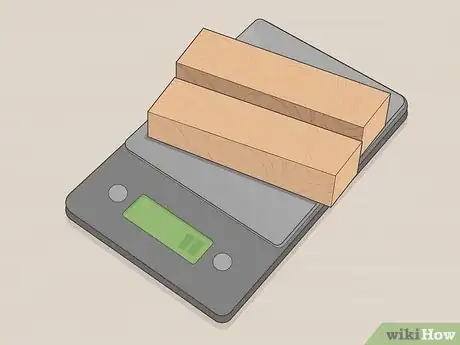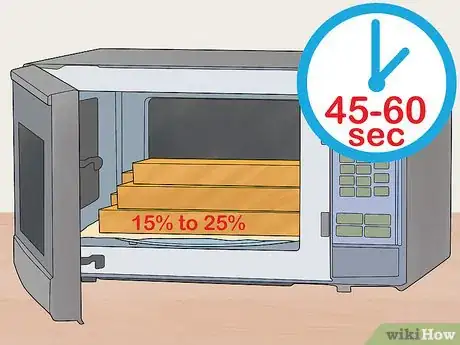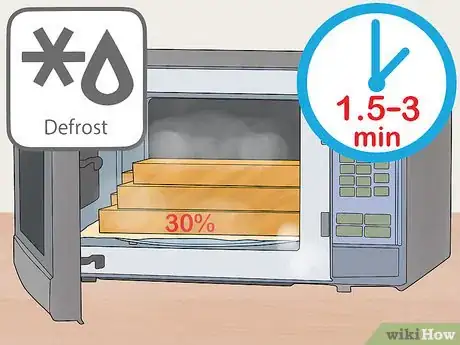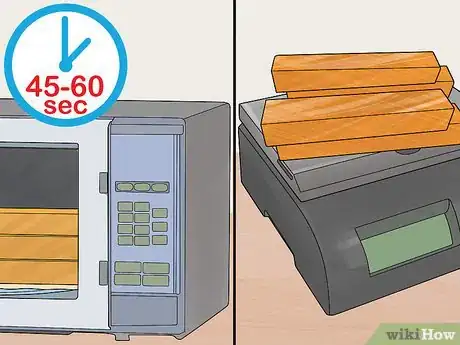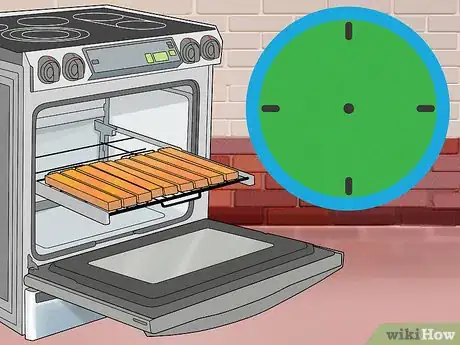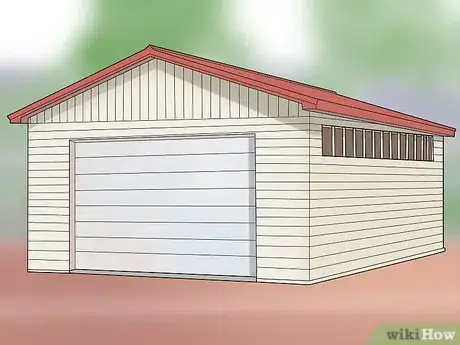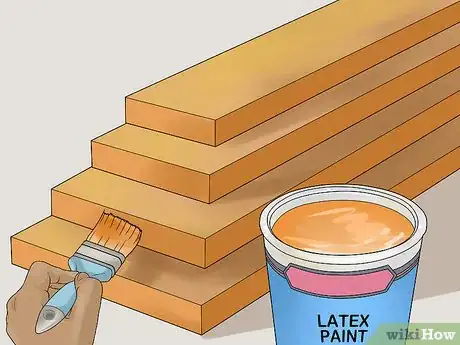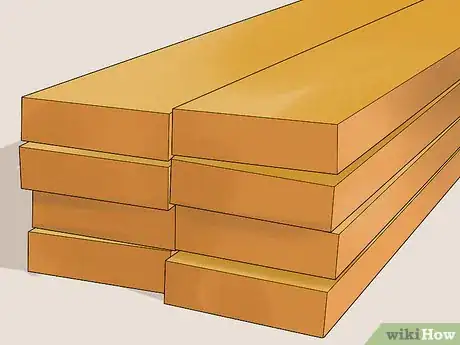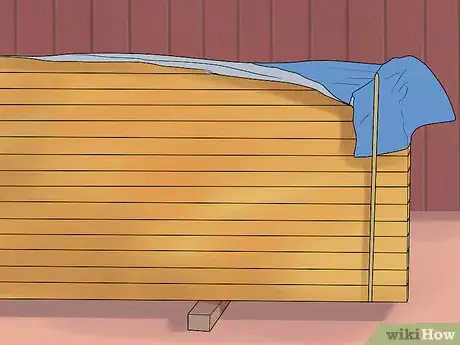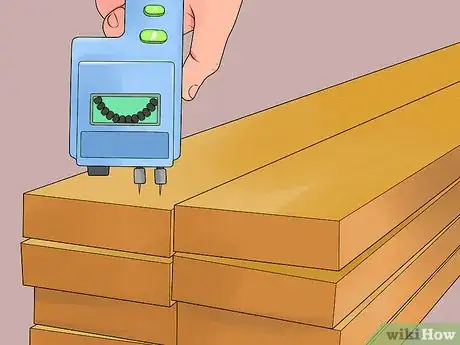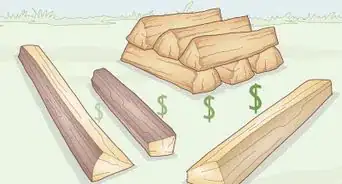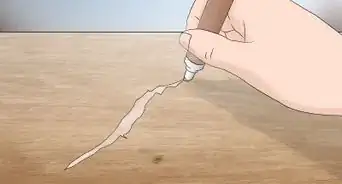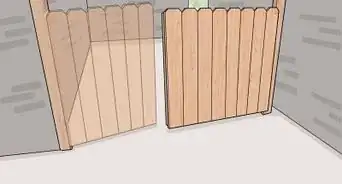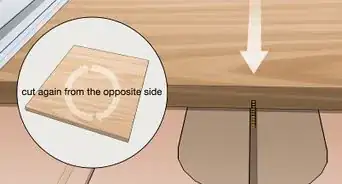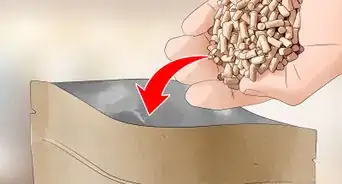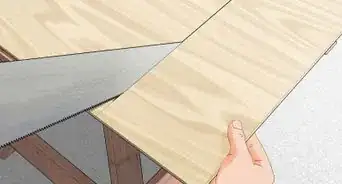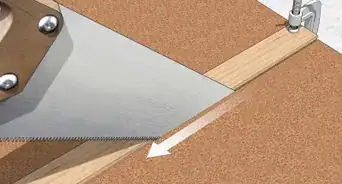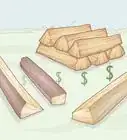This article was co-authored by wikiHow Staff. Our trained team of editors and researchers validate articles for accuracy and comprehensiveness. wikiHow's Content Management Team carefully monitors the work from our editorial staff to ensure that each article is backed by trusted research and meets our high quality standards.
This article has been viewed 94,790 times.
Learn more...
Air-drying lumber typically takes at least a year per inch of thickness, which is far too long for people that want to do a quick woodworking project. Although drying times depend on things like moisture levels, wood species, and lumber thickness, you always have the option of microwaving small pieces of wood or taking a few steps to speed up the drying process for larger pieces of wood.
Steps
Using a Microwave Oven for Small Wood Pieces
-
1Weigh your wood samples using a postal scale. Electronic postal or pocket scales can be purchased from office suppliers and big-box stores. Set it to measure grams, place your wood onto it, and take note of your wood's weight. If you'd like to keep your scale clean, place a container onto the scale, hit "Tare," and then place the wood in.[1]
- Use a scale that has an accuracy within 0.1% for the best results. Otherwise, accuracy should be at least within 0.035 ounces (0.99 g).
-
2Measure the moisture content (MC) with a moisture meter. For pin-type moisture meters, press the 2 tips into the wood and activate it for the moisture reading. For pinless meters, press the base of its scanning plate against the wood and turn the meter on. Record the moisture content, which will be a percentage between 0 and 100.[2]
- Purchase moisture meters from home hardware stores and online suppliers.
Advertisement -
3Microwave 15% to 25% MC wood at the lowest setting for 45 to 60 seconds. Place 3 to 5 paper towels onto the microwave oven's plate and place your wood on top. Most ovens come with a "Low" setting and a "Defrost" setting that is slightly higher. Set it to "Low" and look out for smoke—this is a sign that you have burnt away some of the wood weight and volume and any moisture measurements will be inaccurate.[3]
- Never let wood pieces touch if you're heating multiple samples or they can light on fire.
-
4Heat 30% MC or above wood for 1.5 to 3 minutes at the second-lowest heat level. For most microwaves, the next heat level above "Low" is "Defrost." Layer 5 paper towels onto the microwave oven's plate, place your wood on top, and set your microwave to "Defrost." If you don't mind waiting, you can set it to the lowest setting, and wait about 4 minutes instead.[4]
- If you smell smoke or burning on "Defrost," switch to the "Low" heat setting.
-
5Weigh your samples after the first round of heating. Following the first round of heating, weigh your samples on the scale and record the weights. When drying wood, you will notice each piece loses weight, which is a sign that moisture is leaving. The goal is to continue heating your wood pieces until there is no weight change and each of their moisture contents is stable.[5]
- Remember that different types of wood dry at different rates. Don't be surprised if some pieces lose moisture slower or faster than others.
-
6Continue heating your wood and weighing it until there are no weight changes. Heat the wood in intervals of 45 to 60 seconds with a 1-minute rest in between each. For highly accurate scales, you shouldn't be able to detect variation more than 0.1 gram once the drying process is done. For gram scales, stop when you get about 5 or 6 readings that are the same.
- Moisture meters can also detect moisture content, but the weight method is the most accurate.
- Calculate the moisture content following the final heating by using the following formula: (Wet Weight – Oven Dry Weight / Over Dry Weight) x 100.
Using a Conventional Oven for Medium Pieces
-
1Preheat your oven to 217 °F (103 °C) and monitor its temperature. After setting the heat, place one kitchen rack on the bottom and another in the center. Now, place a large baking pan on the bottom rack and put an oven thermometer onto the center rack in one of its far corners.[6]
- If your oven doesn’t let you set the temperature to 217 °F (103 °C), set it to the closest increment, such as 215 °F (102 °C).
-
2Adjust your oven settings until it hits 217 °F (103 °C). Monitor your oven thermometer every 10 minutes. If it's too high, lower the temperature, and if it's too low, increase it. Always adjust the temperature by the smallest increments for optimal accuracy.[7]
- Turn on your kitchen fan if it has one—this will ensure optimal airflow.
-
3Place your wood onto the center rack for 1 hour. Be sure that none of the pieces are touching. For smaller pieces, lay them perpendicular to each rung of the oven rack to prevent them from falling through.[8]
- Continue monitoring the oven thermometer every 10 to 15 minutes and adjust temperature accordingly.
-
4Test your wood's moisture content (MC) after 1 hour and reheat for 15 minutes increments as necessary. After 1 hour has passed, remove 2 to 3 wood pieces of varying sizes from the oven. Measure their moisture content using a moisture meter. Continue heating the pieces for 15-minute intervals until the desired MC or until the moisture levels do not decrease anymore.[9]
- Purchase moisture meters from home hardware stores and online suppliers.
Speeding up the Drying Process for Large Lumber
-
1Process your logs as fast as possible. If you have just cut down a tree, make the wood into lumber as soon as you can. Processing opens up the wood and helps the drying process, which can prevent stain and rot from affecting the wood.[10]
-
2Store your wood in a shaded location with ample airflow. Try and find an indoor location like a hayloft or shed or an outdoor location that is in the shade. Avoid locations like garages which likely don't have enough airflow. Never store wood in the basement or inside boxes as they dry, they definitely won't have enough airflow.[11]
- Remember that your wood needs to dry in an area with a similar moisture content that the finished product will be exposed to. For example, if you plan to use the wood to make a chair that will be placed in a dry area of your home, store it in an area with similarly low moisture content
- Point an electric household fan toward your wood between your cutting sessions to improve airflow. This circulation will help your wood dry in at least half the time that it normally would.
-
3Seal off the ends of each piece of lumber immediately after cutting to prevent moisture decay. Exposed ends can lead to drying that is too fast, which paves the way for end-grain cracking and splits. And since moisture escapes wood 10 to 12 times quicker from the ends, leaving them exposed is damaging to the wood. Apply paraffin wax, shellac, polyurethane, or latex paint to the ends in a uniform manner so that both are completely covered. Try to do so as soon as possible—within minutes—for the best results.[12]
- Purchase specially formulated end grain sealers from woodworking or home hardware stores if you don't mind paying a bit more money.
-
4Stack your lumber uniformly to expose all sides to airflow. When you're cutting your lumber, cut the pieces to the same lengths and thicknesses. Afterward, these equal dimensions will make it easier to stack them in a manner that exposes each side to air. Use small pieces of 3⁄4 by 11⁄2 inch (1.9 cm × 14.0 cm) wood, also known as stickers, to create space between each side and increase ventilation.[13]
- Use spacers every 12 inches (30 cm) for thinner pieces and 16 inch (41 cm) or 24 inch (61 cm) spacing for thicker pieces.
-
5Cover the top of your wood with a tarp or plastic sheeting. Don't cover the entire pile of wood to the ground—this will hold in moisture. By just covering the top, you can ensure that each piece is adequately shaded without trapping moisture.[14]
- Skip this step if you're storing your wood indoors or somewhere with adequate shade.
-
6Measure the moisture content (MC) of your wood with a moisture meter. If you're using a pin-type moisture meter, press the 2 tips of the device into your wood. Afterward, turn it on and examine the moisture reading. For pinless meters, press the base of the scanning plane to the wood and activate it. Moisture readings are a percentage between 0 and 100.[15]
- Buy both types of moisture meters from online suppliers and home hardware stores.
Warnings
- Don't use high-heat microwave settings or you risk starting a fire.⧼thumbs_response⧽
- Use oven or work gloves when handling heated wood.⧼thumbs_response⧽
References
- ↑ https://youtu.be/gwM7-KCD8Vk?t=4m12s
- ↑ https://youtu.be/01EYuMPrRmY?t=58s
- ↑ http://www.richardjonesfurniture.com/Articles/microwave-dry-wood/microwave-dry-wood.html
- ↑ http://www.richardjonesfurniture.com/Articles/microwave-dry-wood/microwave-dry-wood.html
- ↑ http://www.richardjonesfurniture.com/Articles/microwave-dry-wood/microwave-dry-wood.html
- ↑ https://ir.library.oregonstate.edu/downloads/jm214q048
- ↑ https://ir.library.oregonstate.edu/downloads/jm214q048
- ↑ https://ir.library.oregonstate.edu/downloads/jm214q048
- ↑ https://youtu.be/01EYuMPrRmY?t=58s
- ↑ https://www.wood-database.com/wood-articles/drying-wood-at-home/
- ↑ https://baileylineroad.com/4-wood-drying-tips-for-woodworking-projects/
- ↑ https://www.wood-database.com/wood-articles/drying-wood-at-home/
- ↑ https://www.wood-database.com/wood-articles/drying-wood-at-home/
- ↑ https://baileylineroad.com/4-wood-drying-tips-for-woodworking-projects/
- ↑ https://youtu.be/01EYuMPrRmY?t=58s
About This Article
With a few tricks, you can easily dry your wood faster at home. For small pieces of wood, heat them in your microwave oven for 45 to 60 seconds on its lowest setting. If the wood is particularly damp, heat it for 1 ½ to 3 minutes on your microwave’s defrost or 2nd lowest setting. You can buy a moisture meter to get a precise measurement. For larger pieces of wood, preheat your oven to 217 degrees Fahrenheit, space the wood on the center rack, and heat it for 1 hour. If you have a moisture meter, keep heating your wood in 15 minute increments until the moisture level of the wood doesn’t change anymore. For more tips, including how to help large lumber dry faster, read on!
